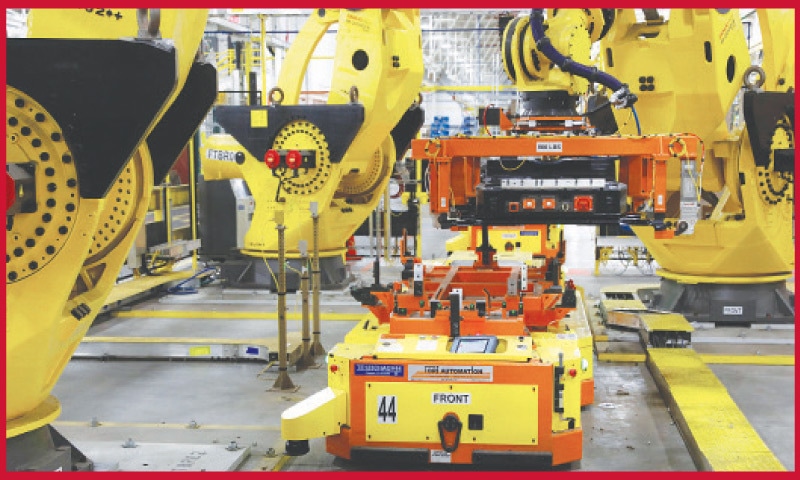China’s real estate breakdown
On the southern tip of peninsular Malaysia, a cluster of high rises built to house tens of thousands of people in luxury condominiums overlooks the sea. The $100 billion development called Forest City, meant to be the company’s flashy overseas showpiece, has instead become a target of creditors as the developer shows signs of financial distress. The mostly empty Forest City project is a towering reminder of some of the core problems that have taken down China’s once-booming property sector — high borrowing and overbuilding. Forest City embodies Country Garden’s strategy of churning out megaprojects in places with high potential and low land costs, a model that fueled its growth when China’s property market was booming. Once a major driver of growth for China’s economy, the property sector boomed for decades as developers borrowed heavily and built big. Then Beijing tightened credit on developers to curb speculative behaviour, and economic troubles during the Covid-19 pandemic exacerbated the slowdown.
(Adapted from “The $100 Billion Luxury Complex That’s Sitting Empty And Unfinished,” by Feliz Solomon and Rebecca Feng, published on September 8, 2023, by The Wall Street Journal)
Don’t go the extra mile
Employees often go the extra mile by staying late or helping a coworker with an assignment. These actions — known as citizenship behaviours — are especially beneficial to the companies where these employees work. However, some workers go far beyond common citizenship behaviours and cross important work-life boundaries by using their own money for company expenses, working during vacations, or cancelling plans. These extreme citizenship behaviours can be detrimental to employee well-being, team culture, and the fabric of our communities. They create social norms that can be challenging to abandon, for example, pulling one all-nighter for a project can lead to two all-nighters for the next assignment. Indeed, social norms can be even more powerful than formal rules and regulations. As individuals witness others’ attempts to win the boss’s favour, they may feel obligated to follow suit. Ultimately, these overextensions can lead to fatigue, unethical behaviour, turnover, and work-family conflict.
(Adapted from “How Hyperflexibility Can Benefit — or Burn Out — Your Team,” by Zahira Jaser and Thomas Roulet, published on January 05, 2022, by MIT Sloan Management Review)
Parental pay gaps
When it comes to the economics of motherhood, the surprises don’t stop. The first is how little others value parents’ time. Parenting is more work than it used to be, as the pressure to optimise one’s child through stimulating cultural activities has increased. Between 1965 and 2012, time spent on childcare by mothers rose in America, Britain, Germany and Denmark. Only in France did it fall. ‘I find it mind-boggling how central children are to the earnings gap between men and women, at least in rich countries. In 2019 working-age women in Britain earned 40pc less than men, through a combination of lower hourly wages, working fewer hours and being less likely to work at all. The tell is the timing — those inequalities explode after having children,’ writes the FT’s columnist, Soumaya Keynes.
(Adapted from “Motherhood Is Full of Surprises — The Economic Ones Sting The Most,” by Soumaya Keynes, published on September 8, 2023, by the Financial Times)
Emulating Lego
The Lego Group has been one of the most widely researched and emulated companies for its open innovation achievements with consumers. A crowdsourcing pilot that Lego launched in 2008 evolved into Lego Ideas, a community of more than 2.8m customers that has shared and debated more than 135,000 ideas for Lego sets and generated significant revenues for the company. The lucky few whose ideas are commercialised get 1pc of the product’s top-line revenue — often a life-changing sum. Meanwhile, popular ideas that are not selected as Lego products can get a second chance through a crowdfunding program on BrickLink, a consumer-led channel that Lego acquired in 2019. Our four-year study of Lego Ideas and BrickLink has uncovered fresh insights for managing open innovation platforms.
(Adapted from “Lego Takes Customers’ Innovations Further,” by Michela Beretta, Linus Dahlander, Lars Frederiksen, and Arne Thomas, published on September 12, 2023, by MIT Sloan Management Review)
Published in Dawn, The Business and Finance Weekly, September 18th, 2023










































Dear visitor, the comments section is undergoing an overhaul and will return soon.